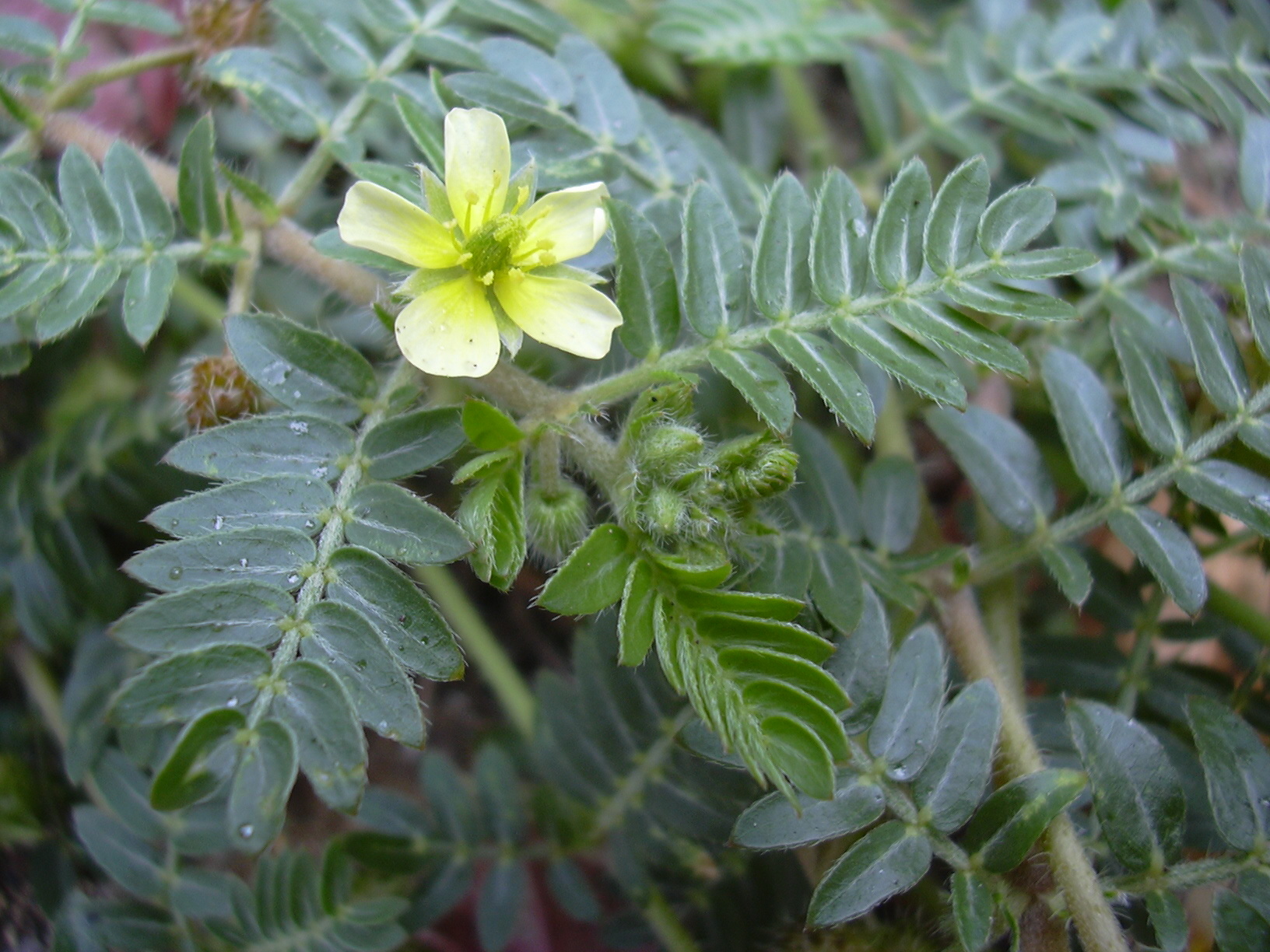Caltrop produces woody burrs with sharp rigid spines which can cause injury in urban areas including recreational places such as ovals and parks. It’s also a hazard in horticulture, particularly in hand-picked crops.
Caltrop (Tribulus terrestris) is a pesky pest plant which produces spiky burrs throughout summer and autumn. Up to 1000 fruit can be produced on each plant, with a total of up to 20,000 seeds.The seeds germinate after summer rain and plants grow rapidly, flowering and forming new burrs within three to five weeks.Caltrop originates from the Saharan area of North Africa. It is thought to have been introduced to Australia, contaminating seed products.
Why is caltrop a problem?
Caltrop spines are a hazard to stock, damaging the feet, mouth, stomach and intestines of animals. It is toxic to sheep and may present similar problems to native fauna.
Injury to people often occurs around farm buildings, roadsides, on property and recreational areas. Caltrop burrs are a scorn to cyclists as they puncture tyres easily.
Caltrop devalues produce which is contaminated by it, and is a fault in wool. Its spines cause injury to fruit pickers and shearers and it’s a significant pest in summer crops as it competes for soil moisture.
What does caltrop look like?
Caltrop is a flat, sprawling, summer-growing, annual herb. Its trailing stems lie flat on the ground, radiating from a central taproot. The stems are reddish brown, wiry and covered with fine hairs.
Caltrop has small divided leaves, arranged in pairs on opposite sides of the stem. The leaves are darker on the upper surface than on the lower. Each leaflet is about 5–12 mm long and 3–5 mm wide. Fine hairs, particularly on the underside, give a silvery appearance to the leaves.
Flowers are produced from spring to autumn. They are small, less than 1 cm in diameter, yellow and have five petals.
The fruit is a woody burr with sharp rigid spines to about 6 mm long. The burr splits into five wedge-shaped segments when ripe with each segment containing two unequal pairs of spines. Each fruit segment contains up to four seeds.

How does caltrop spread?
The burrs are well-equipped for dispersal – whichever way the fruit lies on the ground, one of the spines always points upwards – and they readily attach to the feet of animals, vehicle tyres, rubber-soled shoes and almost any object that is placed on it. The burrs also become embedded in sheep fleece.
Caltrop prefers warm-temperate regions on light-textured soils.
Caltrop seeds remain dormant in the soil for up to 5 years.
It is a weed of cultivated crops, orchards, over-grazed pastures, stock yards, roadsides and wasteland. It commonly occurs in areas with sandy soils where there is little competition from other plants.
How to get rid of caltrop from your property?
There are a number of methods you can use to control caltrop.
Hygiene
Prevent spreading seeds by not riding, walking or driving through areas of caltrop infestation and remove any seeds from vehicles, shoes and equipment before moving out of an infested area.
Manual removal
Hand pulling can be effective in small infestations. It’s important to pull from the root crown in order to remove the tap root.
Bag the removed plant and seeds for disposal in the landfill bin. The top soil of larger areas can be scraped with machinery and material buried below 50cm of fill.
Competition
Caltrop is a poor competitor so keeping good vegetation cover or spreading with a thick layer of mulch can suppress germination in the future.
Chemical
Several registered herbicides are available for control in different situations; targeted spot spraying for individual plants or blanket spraying for large areas. If you do use a chemical spray it’s important to remember that there is likely to be a series of germinations throughout summer. More than one spray may be necessary, particularly if a residual chemical is not used. It's also critical to time your spraying before seed set occurs.
For advice on chemical options go to PIRSA's Identifying declared weeds.
Is caltrop illegal?
Yes. Caltrop is a declared weed under the Landscape South Australia Act 2019.
Observations of weeds can be entered into iNaturalist, an app which can assist with identification of species.